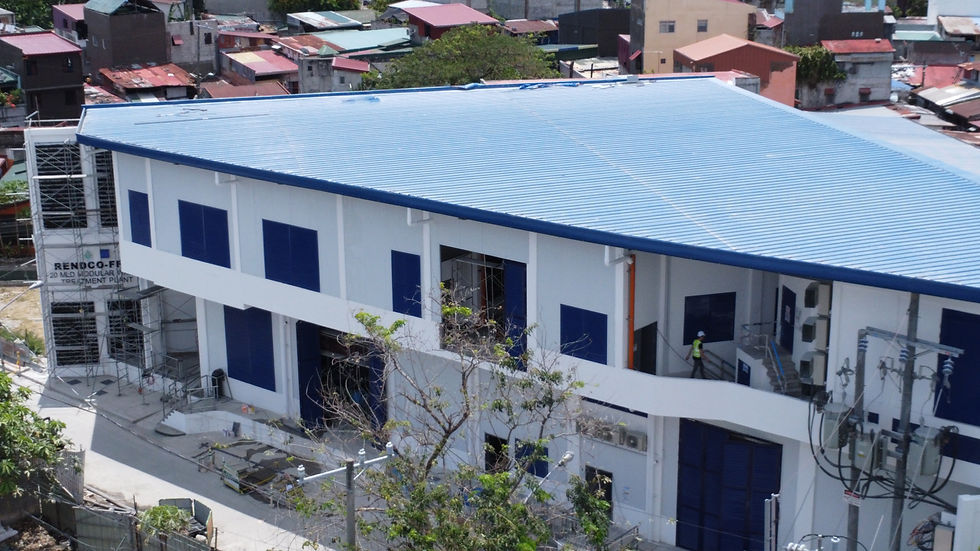Navigating Water Horizons: The Impacts and Challenges of a 20 MLD Water Treatment Project
- Raella Mendez
- Jul 24, 2024
- 3 min read
In the realm of water management, addressing the growing demand for clean and accessible water is a difficult challenge. Let us delve into the intricate landscape of a 20 Million Liters per Day (MLD) water treatment project, exploring its significance, potential impacts, and the challenges associated with such a critical endeavor.
Project Overview
The 20 MLD water treatment project, a partnership between RENDCO Water and Maynilad Water, signifies a substantial undertaking aimed at meeting the escalating demand for potable water. The scale of the project reflects the recognition of the importance of securing a sustainable and reliable water supply for the community of Muntinlupa and Cavite. The project typically involves the development of advanced water treatment facilities capable of processing 20 million liters of water per day to meet the stringent standards for safe consumption.
As featured in Bloomberg: “Turning on the Tap: Ensuring Water and Wealth Flow Together in the Philippines”, RENDCO incorporated several key global technologies such as Nanostone’s Ceramic UF Membrane, Cembrane’s Ceramic Flatsheet Membranes, Moleaer’s Nanobubble Technology and Amcon’s Sludge Dewatering Press into one localized design that produces zero liquid discharge, which means every drop of water is used and conserved which proves RENDCO‘s commitment to sustainability through a CIRCULAR WATER PROCESS.
This water treatment project was awarded to the 20 MLD Consortium with Rendco Water being the Lead Project contractor. This water Treatment Plant will convert surface water coming from Laguna Lake to clean water with a volume of 20 Million Liters per day.

Meeting Growing Demand
One of the primary motivations behind the 20 MLD water treatment project is to address the increasing demand for water due to population growth, urbanization, and industrial development. The project is seen to play a crucial role in ensuring that communities have access to an adequate and safe water supply, mitigating the risk of water scarcity and related socio-economic challenges.
Ensuring Water Quality
The scale of the project reflects a commitment to maintaining high standards of water quality. Advanced treatment processes, including filtration, disinfection, and chemical treatment, are often implemented to ensure that the treated water meets or exceeds regulatory guidelines. This is particularly important for safeguarding public health and preventing waterborne diseases.
Environmental Impact
While the project aims to address water scarcity, its implementation may have environmental implications. The extraction of large volumes of water, potential changes in the water table, and the discharge of treated effluent require careful consideration to minimize ecological disruptions. Environmental impact assessments and sustainable practices are essential components of responsible project management.
Infrastructure Challenges
Developing a 20 MLD water treatment facility involves substantial infrastructure investments. And RENDCO was no stranger to this. Challenges have arisen in terms of managing the construction of complex treatment plants. Their coordination among various stakeholders, including government agencies, engineering firms, and local communities, was a critical step to the success of the project.
Operational Sustainability
The long-term success of the project hinges on RENDCO’s operational sustainability. As part of RENDCO’s commitment to Maynilad, adequate maintenance, efficient energy use, and ongoing monitoring of water quality are specific actions that were agreed to as they are deemed essential to ensure the continued functionality of the treatment facility.
The 20 MLD water treatment project represents a significant stride towards addressing water challenges on a large scale. As communities grapple with the need for sustainable water solutions, such endeavors underscore the importance of proactive and comprehensive water management strategies. While the project holds promise for meeting growing water demands, its success requires meticulous planning, environmental consciousness, and ongoing commitment to operational excellence. Ultimately, the 20 MLD water treatment project symbolizes the commitment to securing a water-abundant and resilient future for the communities it serves.






コメント